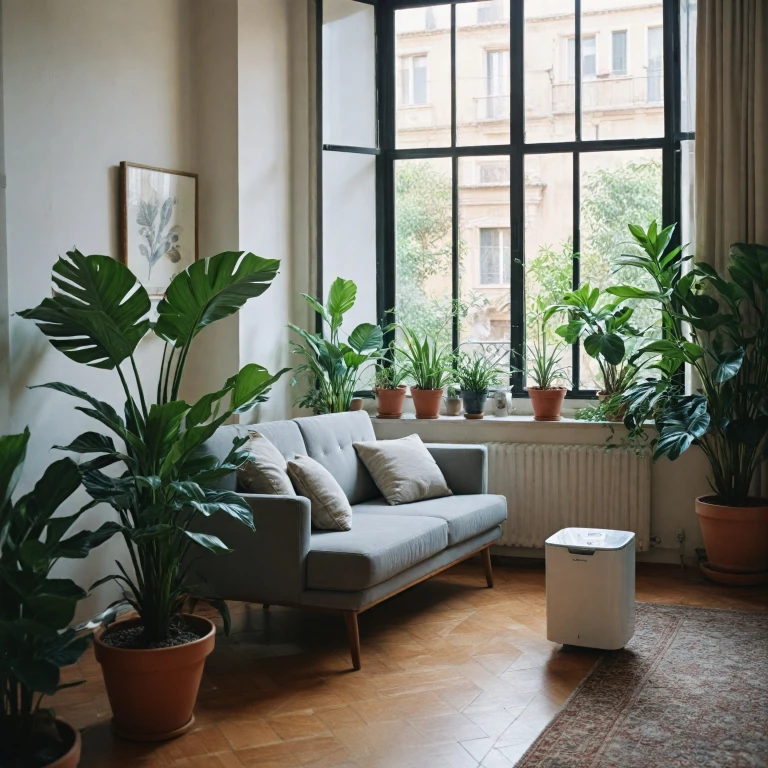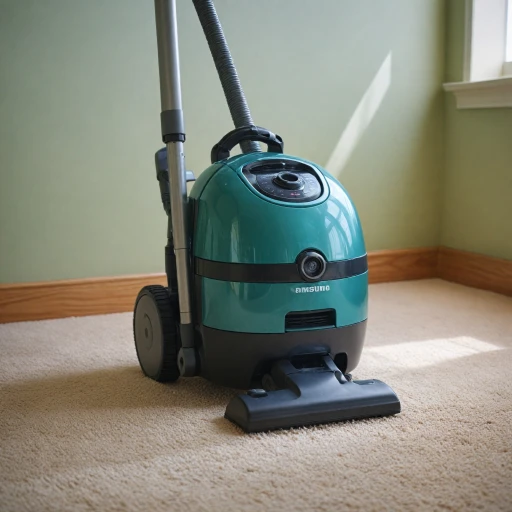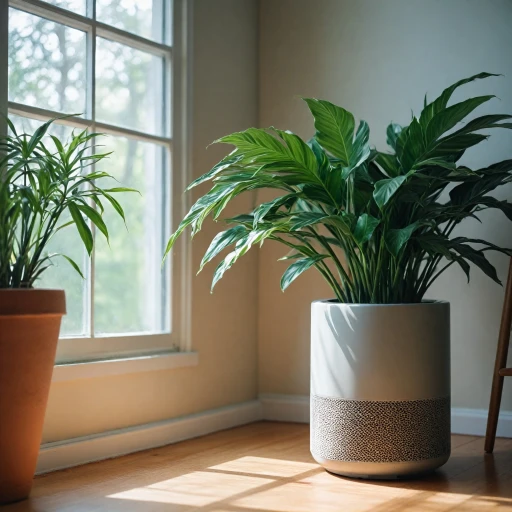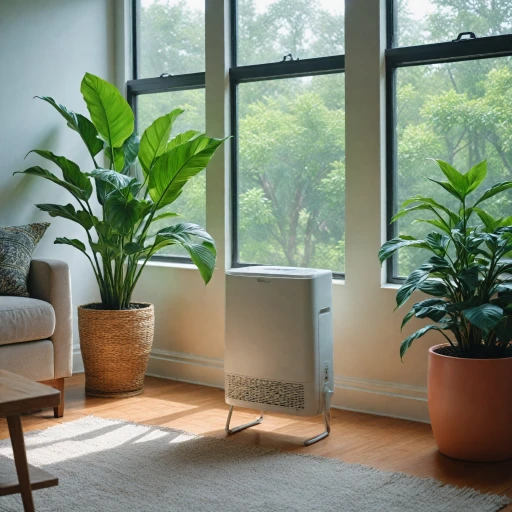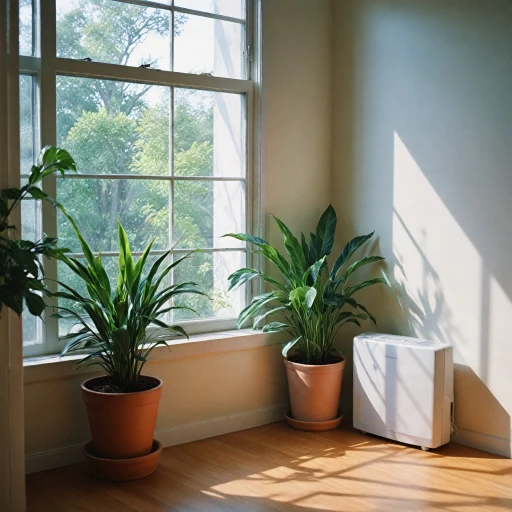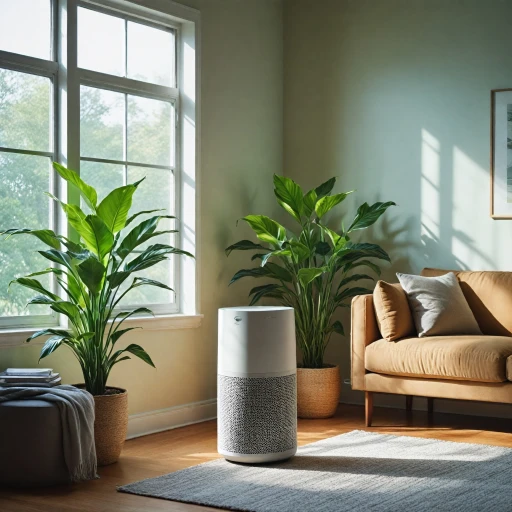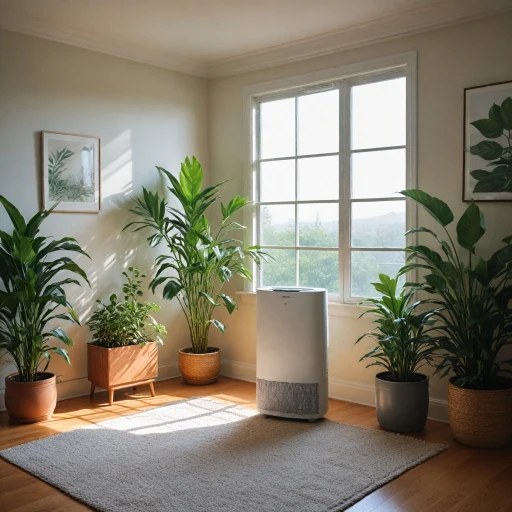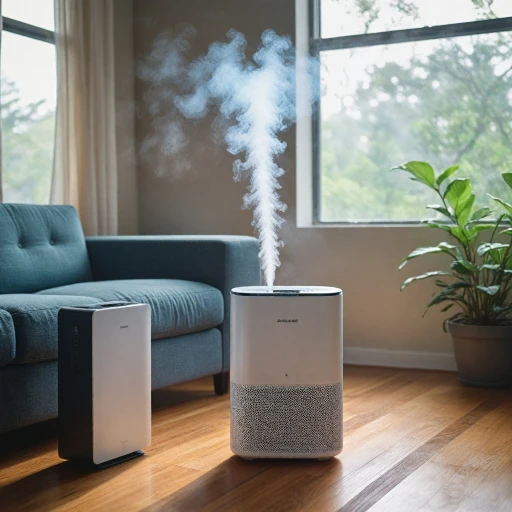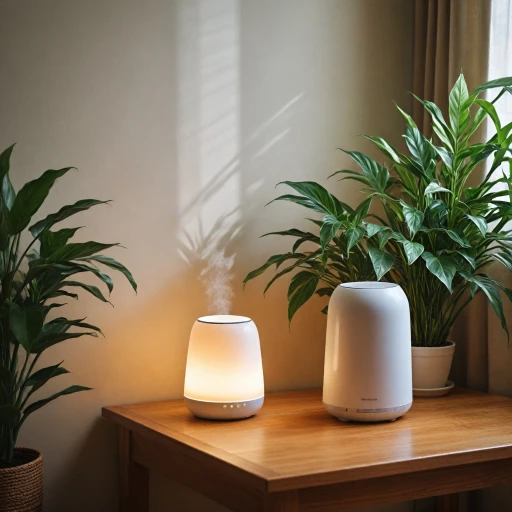
What are VOCs?
Unveiling the Mystery of Volatile Organic Compounds
Volatile Organic Compounds, often referred to as VOCs, are a group of chemicals found in many everyday products and materials. These compounds are notorious for their ability to evaporate easily at room temperature, hence the term "volatile." VOCs can be emitted by household products such as paints, varnishes, cleaning supplies, and even new furniture, raising concerns about indoor air quality.
Many people are unaware of the potential dangers posed by VOCs in their homes. These chemicals can contribute to health problems such as headaches, dizziness, and respiratory issues. Understanding what VOCs are and how to effectively manage them is crucial for maintaining a healthy living environment.
When considering an air purifier to tackle VOCs, it's important to know that not all purifiers are created equal. Different models utilize various filtration technologies to address VOCs and other particles. For instance, an air purifier with an activated carbon filter is renowned for its ability to remove vocs efficiently. The activated carbon works by adsorbing VOCs onto its surface, capturing them before they circulate through the air.
While VOCs can be challenging to manage, enhancing your home's air quality with the right purifier is possible. By understanding the characteristics of VOCs and selecting a suitable air purifier, you can create a safer and cleaner indoor environment. For those prioritizing their newborn's health, it's essential to make informed choices. Learn more about finding the best air purifier for your newborn's room so that you can provide clean air for the newest addition to your family. Choosing the right air purifier for your nursery can make a significant difference.
How Air Purifiers Work Against VOCs
Leveraging Filtration Technology for Maximum Effectiveness
Air purifiers are equipped with various filters to tackle different pollutants, particularly Volatile Organic Compounds (VOCs). These VOCs are chemical gases emitted from numerous everyday products, significantly affecting air quality. To combat these compounds effectively, purifiers employ a combination of filtration technologies.- Activated Carbon Filters: These are integral in dealing with VOCs due to their porous nature, which allows them to trap and neutralize gaseous pollutants. High-quality activated carbon filters act as a sponge for chemicals in the air, making them particularly effective in reducing VOC concentrations indoors.
- True HEPA Filters: While primarily used for capturing particles like dust, pollen, and pet dander, true HEPA filters also play a supportive role. They can trap larger particles that might carry VOCs, complementing the action of carbon filters.
- Advanced Filtration Systems: Some modern purifiers incorporate sophisticated filtration mechanisms, combining HEPA, carbon, and other technologies, to optimize air cleaning. For instance, settings such as auto mode can adjust the fan speed to enhance the unit’s effectiveness against fluctuating VOC levels.
- Air Flow and Fan Speed: The design and capacity of a purifier, including room size and fan speed, impact its ability to remove VOCs effectively. It's essential to select purifiers with customizable settings to match your indoor air needs. Brands available on platforms like Amazon offer varying specifications and prices, catering to diverse preferences and requirements.
Benefits of Using an Air Purifier for VOCs
Improving Your Indoor Atmosphere
Utilizing an air purifier specifically designed to target VOCs can significantly enhance your indoor air quality. VOCs, or volatile organic compounds, are chemicals that can easily become gases, and they originate from numerous household products. Traditional filters are not enough to trap these compounds due to their gaseous nature. This is where specialized filtration technology comes into play.
The best air purifiers for VOCs usually incorporate a combination of True HEPA filters and activated carbon filters. The HEPA filter tackles airborne particles such as dust and pollen, while the activated carbon filter targets VOCs by adsorbing the gaseous molecules. This dual filtration process ensures a comprehensive approach to creating a clean air environment.
Many purifiers also come equipped with additional features such as adjustable fan speeds and auto modes, which allow the device to adapt to the pollution levels in the room. This adaptability not only guarantees high efficiency but also aids in maintaining optimal performance of the purifier. Furthermore, some advanced models like the Air Mini offer high filtration capacity, making them ideal for various room sizes.
Brands like Alen and others on platforms like Amazon offer an array of products tailored to VOC removal needs. Always consider the carbon filter’s quality, filtration technology, and room coverage before purchasing, to ensure you get the best price-to-performance ratio.
Choosing the Right Air Purifier for VOCs
Factors to Consider When Selecting a VOC-Specific Air Purifier
Choosing the best air purifier for VOCs involves several key factors to ensure optimal performance in improving air quality. Here's what you need to consider:- Filtration Technology: Look for purifiers with high-grade filtration technology, such as True HEPA filters and activated carbon filters, that are specifically designed to remove VOCs and other volatile organic compounds from the air. Activated carbon is particularly effective in absorbing VOC particles due to its porous nature.
- Fan Speed and Auto Mode: An air purifier with adjustable fan speed and auto mode can help maintain clean air by adjusting to air quality fluctuations. This not only enhances efficiency in VOC removal but also contributes to overall indoor air comfort.
- Room Size Compatibility: Ensure the air purifier is suitable for the size of the room you intend to purify. It's crucial to match the purifier's capacity with the room's dimensions to achieve the desired air quality. For instance, choosing an air purifier labeled for large rooms in a small space might lead to quicker, more effective results.
- Price and Quality: While budget is a consideration, prioritize quality and performance over a low price tag. Brands like Alen and other respected purifiers on Amazon offer various models known for their reliable VOC filtration capabilities.
- Extra Features: Some advanced air purifiers come with additional features such as air quality indicators, special modes for night time or allergy seasons, and connectivity options. These extra features improve user experience and provide more control over air quality management.
Common Misconceptions About Air Purifiers and VOCs
Debunking Air Purifier Myths Surrounding VOCs
When considering air purifiers to address VOCs, it's important to distinguish between fact and fiction. Let's clear up some common misconceptions about these essential devices:- All Air Purifiers Are the Same: It's easy to assume that any air purifier will combat VOCs, but this isn't the case. Only certain models equipped with high-quality activated carbon filters or advanced filtration technology can effectively remove VOCs. While HEPA filters effectively capture particles, they are not designed to remove VOCs on their own. It's vital to research products tailored to address VOCs for optimal indoor air quality.
- Activated Carbon Filters Are Ineffective: Some might claim that carbon filters are not necessary for removing organic compounds, yet they play a crucial role in trapping VOCs. Activated carbon technology works by adsorbing chemicals, significantly reducing VOC levels in the room.
- Higher Price Equals Better Filtration: While price can be an indicator of quality, it's not always a guarantee of performance. It's essential to evaluate air purifiers based on their features, such as carbon filters and true HEPA filtration, rather than solely relying on cost. Some cost-effective options on platforms like Amazon might meet your specific needs without breaking the bank.
- Air Purifiers Eliminate All VOCs: No air purifier can remove VOCs at 100%. However, a quality purifier can significantly reduce them, improving indoor air quality. Consider models like Alen’s line of air purifiers with multiple fan speeds and auto mode settings for maximum filtration efficiency.
- Maintenance Is Not Important: Regular maintenance ensures that your air purifier performs optimally. This includes timely replacement of filters, especially carbon filters, to maintain high air quality. Neglecting maintenance can dramatically decrease the air purifier’s efficiency in filtering VOCs.
Maintenance Tips for Optimal Performance
Maximizing Performance with Regular Maintenance
- Maintain Filters by Routine Replacements: One of the most critical maintenance tasks is regularly replacing the filters. HEPA filters usually need replacement every 6 to 12 months, while carbon filters, essential for removing volatile organic compounds, might require more frequent changes based on usage and air quality.
- Regular Cleaning: Keep your unit dust-free by cleaning the exterior and the surrounding area. This prevents particles from accumulating and affecting air purifier performance. Use a soft cloth for wiping down surfaces and avoid abrasive materials that could damage the unit.
- Monitor Performance Indicators: Many modern air purifiers come with indicators or auto mode that alerts you when filter changes are necessary. Pay close attention to these alerts, as filters clogged with particles can hinder filtration effectiveness.
- Check Fan Speed and Modes: Adjust the fan speed and check the operation mode, such as auto or high, as required by the room's air quality. A higher fan speed can increase air purification, especially in high VOC environments.
- Prevent Overloading with Overlapping VOC Sources: Minimize the load on your air purifier by reducing VOC sources in your home. Choose products with low VOC content and enhance ventilation when possible.
